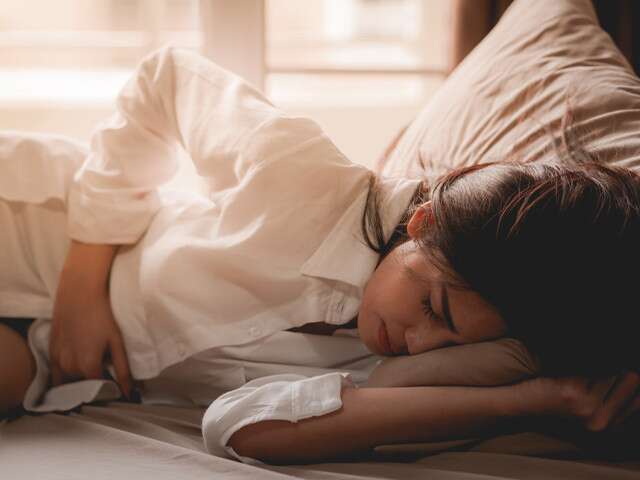Yeast infections, also known as candidiasis, can be a source of discomfort and irritation for many individuals, especially women. These infections occur when there is an overgrowth of the Candida fungus, commonly Candida albicans, in the body. While prescription medications and over-the-counter antifungal treatments are widely available, some people turn to natural remedies in search of relief. In this blog post, we’ll explore various natural remedies for yeast infections, their effectiveness, and when it’s appropriate to consider them as part of your approach to managing candidiasis.
Common Symptoms of Yeast Infections
Before we delve into natural remedies, it’s important to recognize the symptoms of yeast infections. Common signs of candidiasis include:
- Itching and burning: The affected area, typically the genital area in the case of vaginal yeast infections, may be intensely itchy and cause a burning sensation.
- Abnormal discharge: You may notice a thick, white, cottage cheese-like discharge.
- Pain or discomfort: Yeast infections can lead to pain during sexual intercourse or urination.
- Redness and swelling: The affected area may appear red and swollen.
Natural Remedies for Yeast Infections
Numerous natural remedies have been suggested for yeast infections, but it’s essential to approach them with caution and consider their effectiveness on a case-by-case basis. Here are some commonly recommended natural remedies and their potential effectiveness:
1. Probiotics
Effectiveness: Probiotics, particularly those containing lactobacillus strains, can help maintain a healthy balance of bacteria in the body, including the vaginal flora. Some studies suggest that probiotics may be beneficial in preventing and managing yeast infections.
How to use: Consider taking probiotic supplements or consuming probiotic-rich foods, such as yogurt with live cultures. Intravaginal probiotic suppositories are also available and may help restore the balance of vaginal bacteria.
2. Yogurt
Effectiveness: Yogurt with live cultures contains beneficial bacteria that may help regulate the Candida population. Some women use yogurt topically or as a suppository to relieve itching and discomfort associated with yeast infections.
How to use: Apply plain, unsweetened yogurt directly to the affected area or insert a tampon coated with yogurt into the vagina. Leave it in for a few hours or overnight.

3. Coconut Oil
Effectiveness: Coconut oil has antifungal properties and may help combat the Candida fungus.
How to use: Apply coconut oil to the affected area to soothe itching and discomfort. Some individuals also consume small amounts of coconut oil orally to support overall health.
4. Tea Tree Oil
Effectiveness: Tea tree oil is known for its antifungal properties and has been explored as a potential remedy for yeast infections.
How to use: Dilute tea tree oil with a carrier oil (such as coconut or olive oil) and apply it topically to the affected area. It’s important to dilute tea tree oil to avoid skin irritation. Do not use tea tree oil internally or ingest it.
5. Garlic
Effectiveness: Garlic contains allicin, a compound with antifungal properties. Some people use garlic as a natural remedy for yeast infections.
How to use: Insert a peeled garlic clove into the vagina and leave it in for a few hours or overnight. Be cautious when using garlic internally, as it can cause irritation or burning for some individuals.
6. Boric Acid Suppositories
Effectiveness: Boric acid has been studied as a treatment for recurrent yeast infections, particularly those caused by Candida species resistant to standard antifungal medications.
How to use: Insert boric acid suppositories into the vagina as directed by a healthcare provider. Do not use boric acid orally or on broken skin.
When to Consider Natural Remedies
While natural remedies for yeast infections are available and may offer relief for some individuals, it’s crucial to consider the following factors:
1. Consult a Healthcare Provider
Before attempting any natural remedy for yeast infections, consult a healthcare provider to ensure you have an accurate diagnosis. Some symptoms of yeast infections can mimic other conditions, and it’s essential to rule out underlying medical issues.
2. Safety and Allergies
Be aware of potential allergies or sensitivities to natural remedies. Always perform a patch test or consult with a healthcare provider before using a new remedy, especially if you have known allergies or skin sensitivities.
3. Effectiveness
The effectiveness of natural remedies for yeast infections can vary from person to person. What works for one individual may not work for another. Be prepared to try different remedies or a combination of approaches to find what provides relief for you.
4. Underlying Health Conditions
Consider whether underlying health conditions or medications may be contributing to recurrent yeast infections. In some cases, addressing these underlying factors is essential for long-term management.
5. Safety Precautions
Exercise caution when using natural remedies internally or on sensitive areas of the body. Always follow recommended guidelines and consult with a healthcare provider if you have any concerns.
When to Seek Medical Attention
While natural remedies may provide relief for mild yeast infections, certain situations require prompt medical attention:
- If your symptoms are severe, persistent, or worsen despite trying natural remedies.
- If you have never had a yeast infection before and are unsure about the diagnosis.
- If you experience recurrent yeast infections, as this may indicate an underlying issue that needs investigation.
- If you are pregnant, some natural remedies may not be safe during pregnancy.
- If you have a weakened immune system or underlying medical conditions that can complicate treatment.
In Conclusion
Natural remedies for yeast infections can be a complementary approach to managing candidiasis for some individuals according to Health Soul. However, their effectiveness can vary, and they should be used cautiously and in consultation with a healthcare provider. It’s essential to prioritize safety, consult with a healthcare professional for an accurate diagnosis, and consider underlying factors that may contribute to recurrent yeast infections. Ultimately, the best approach to managing yeast infections depends on your unique circumstances and preferences.


